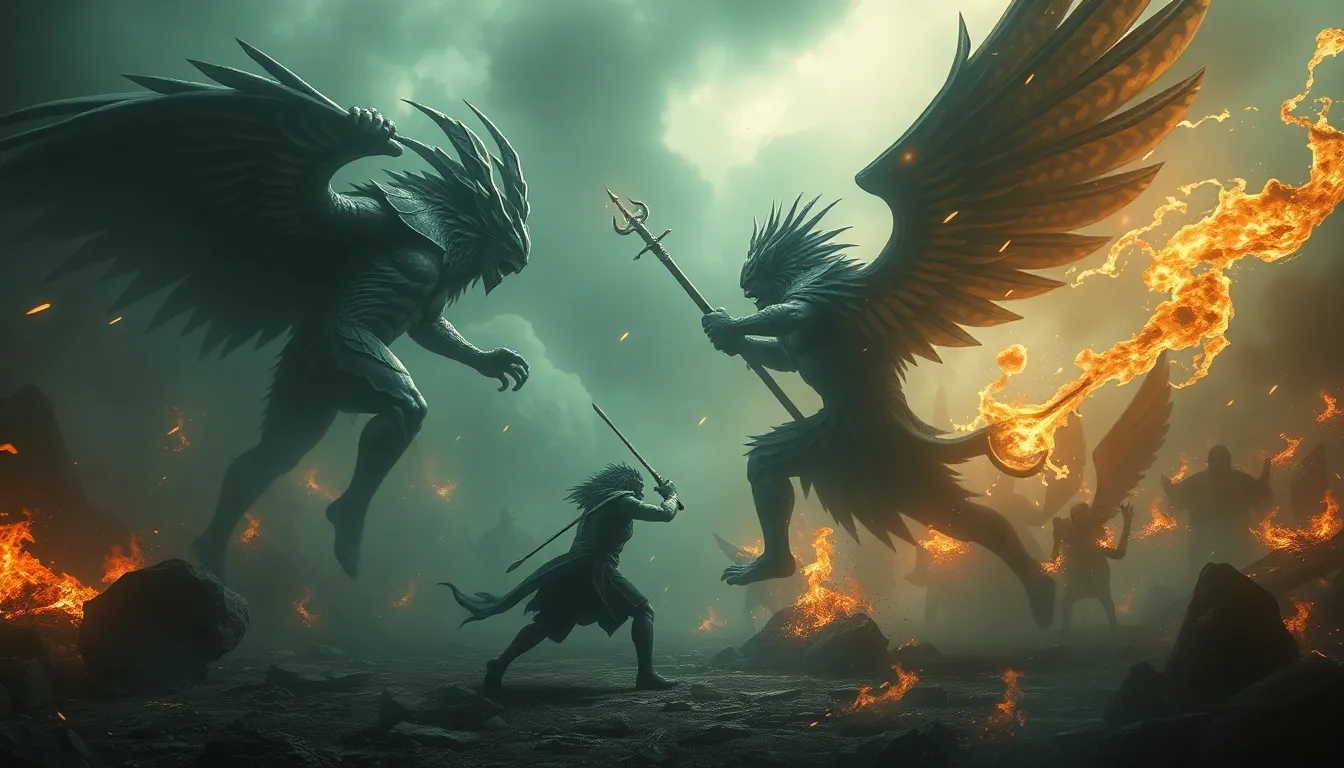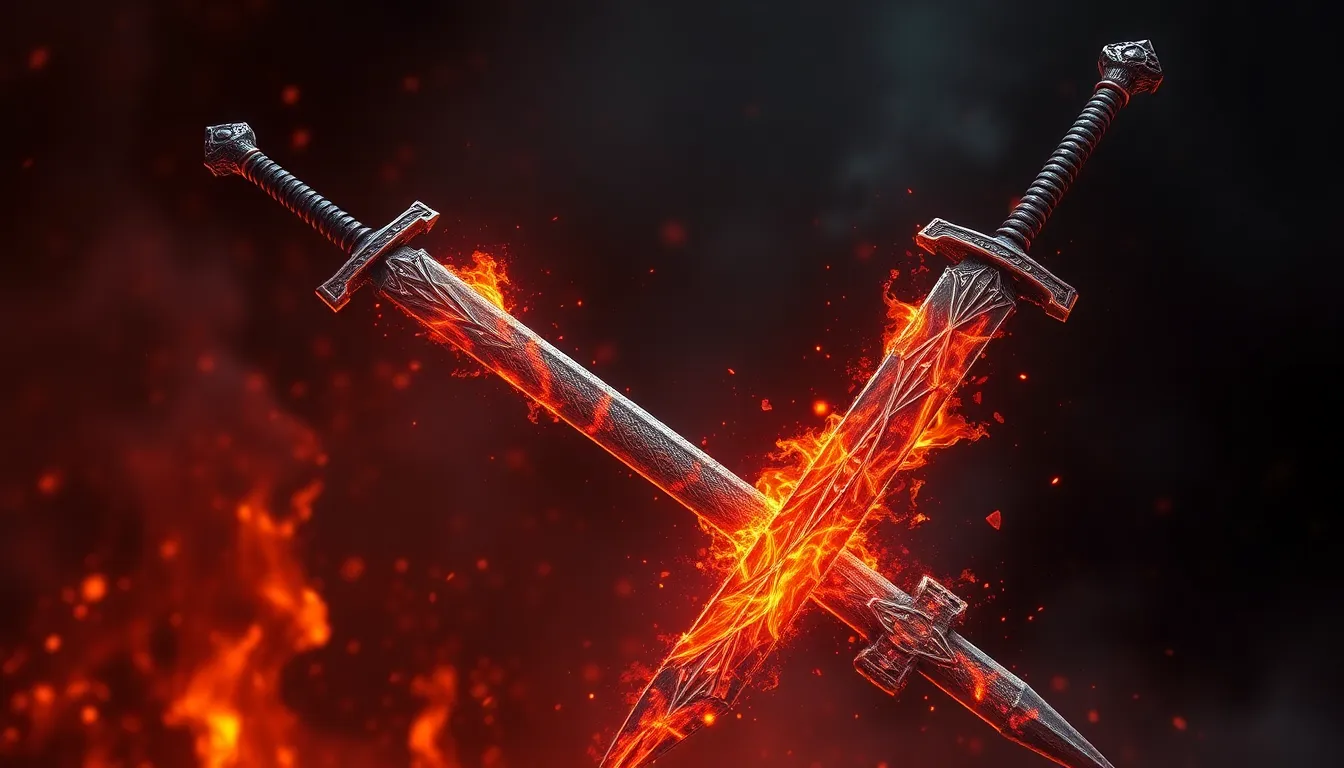Divine Warfare: The Most Intense Battles of the Gods
Introduction to Divine Warfare
Divine warfare, as depicted in mythology and religion, refers to the epic battles fought among gods and deities. These conflicts often symbolize the struggle between good and evil, order and chaos, or various natural phenomena. In ancient cultures, gods were not merely spiritual entities; they embodied the very forces of nature, such as storms, fertility, and war. Their tales of conflict reflect the human experience and the struggles faced by societies throughout history.
The Nature of Divine Conflict
Divine conflicts arise from various motivations, including:
- Power: The desire to rule over the cosmos or specific realms.
- Territory: The control of sacred spaces or domains.
- Ideology: Conflicts over beliefs, values, and the rightful order of the universe.
Mortals often play a crucial role in these godly conflicts, acting as pawns or catalysts in the divine chess game. Their actions, whether through worship, sacrifice, or rebellion, can influence the outcome of these celestial battles.
Greek Mythology: The Titanomachy
One of the most significant divine conflicts in Greek mythology is the Titanomachy, the epic battle between the Titans, led by Cronus, and the Olympian gods, led by Zeus. This monumental clash represents the transition from the old order of the Titans to the new order of the Olympians.
Key figures in this conflict include:
- Cronus: The leader of the Titans who feared being overthrown by his offspring.
- Zeus: The youngest son of Cronus who led the rebellion against his father’s tyranny.
- Prometheus: A Titan who sided with the Olympians, symbolizing foresight and the human spirit.
The Titanomachy not only showcases the struggle for supremacy among gods but also reflects the themes of generational conflict and the cyclical nature of power.
Norse Mythology: Ragnarok
Ragnarok, in Norse mythology, is the prophesied end-of-the-world battle that signifies the death of many gods and the destruction of the world. This cataclysmic event is characterized by a series of natural disasters and the rise of giants.
Major deities involved in Ragnarok include:
- Odin: The Allfather, who seeks knowledge and prepares for the final battle.
- Thor: The god of thunder, destined to fight the serpent Jormungandr.
- Loki: The trickster god, whose betrayal leads to the chaos of Ragnarok.
The fates of these gods are intertwined with the themes of sacrifice, rebirth, and the inevitability of fate, emphasizing the cyclical nature of existence in Norse cosmology.
Hindu Epics: The Kurukshetra War
The Kurukshetra War, depicted in the Indian epic Mahabharata, is a monumental conflict between two factions of a royal family, the Pandavas and the Kauravas. This war is not merely a battle for territory but a profound exploration of dharma (righteousness) and morality.
Divine intervention plays a significant role, particularly through:
- Krishna: The divine charioteer who guides Arjuna, providing him with moral and philosophical teachings.
The Kurukshetra War illustrates the complexities of duty, the consequences of conflict, and the interplay between divine guidance and human action.
Egyptian Mythology: The Battle of Set and Horus
The conflict between Set and Horus for the throne of Egypt is a central myth in Egyptian lore. Set, the god of chaos, represents disorder and is depicted as the antagonist to Horus, the god of the sky and order.
This battle symbolizes:
- Legitimacy: Horus fights to reclaim his rightful place after the murder of his father, Osiris.
- Balance: The struggle between chaos and order, reflecting the duality of existence in Egyptian belief systems.
The resolution of this conflict reinforces the themes of justice and the importance of rightful leadership, which were central to ancient Egyptian culture.
Mesopotamian Conflicts: The Enuma Elish
The Enuma Elish, a Babylonian creation epic, narrates the battle between Marduk and Tiamat, the primordial goddess of the saltwater ocean. This conflict is crucial in understanding Mesopotamian cosmology, as it describes the creation of the world through divine struggle.
Marduk’s victory over Tiamat leads to the formation of the cosmos and the establishment of order. The cultural significance of this battle lies in:
- Creation through Conflict: The belief that chaos must be overcome to create order.
- Divine Authority: Marduk’s ascension as the chief god symbolizes the triumph of civilization over primordial chaos.
This narrative reflects the values and beliefs of ancient Mesopotamian societies regarding creation, power, and the divine right to rule.
Indigenous Mythologies: The Great Spirit and the Trickster
In many indigenous cultures, such as those of Native American tribes, conflict often involves trickster figures, like Coyote. These stories are rich with moral lessons and often emphasize the complexities of life.
Key themes include:
- Moral Lessons: Trickster tales illustrate the consequences of greed, pride, and deception.
- Balance: The duality of creation and destruction, where tricksters can be both heroes and villains.
These conflicts serve as allegories for human behavior and the values upheld by indigenous cultures.
Modern Interpretations and Cultural Impact
The theme of divine warfare continues to resonate in modern literature, art, and popular culture. From epic films to bestselling novels, the archetypal battles between gods have evolved but remain central to storytelling.
Examples of modern interpretations include:
- Movies: Films like “Clash of the Titans” and “Thor” draw heavily on ancient mythological battles.
- Video Games: Titles such as “God of War” and “Smite” allow players to engage in divine conflicts, exploring themes of power and morality.
These modern adaptations highlight the enduring fascination with divine warfare and its relevance to contemporary issues.
Conclusion: The Legacy of Divine Warfare
Divine warfare narratives offer profound insights into human nature and the cosmos. They reflect our struggles for power, understanding, and morality. The battles of gods serve as a mirror to our own conflicts, illustrating the timeless themes of chaos and order, good and evil.
The enduring fascination with these mythological conflicts in modern society underscores their significance, reminding us that the stories of gods and their battles continue to shape our understanding of the world around us.



